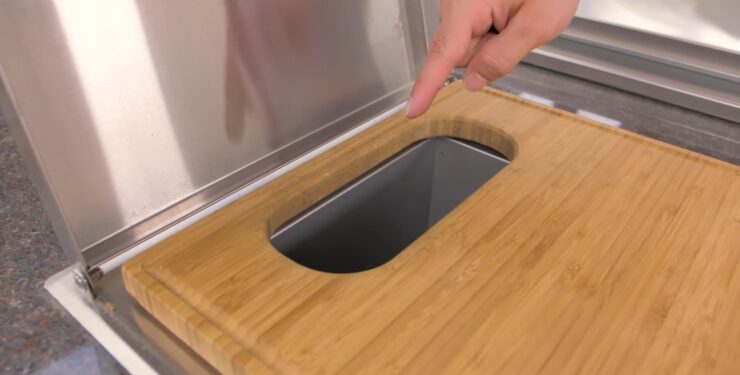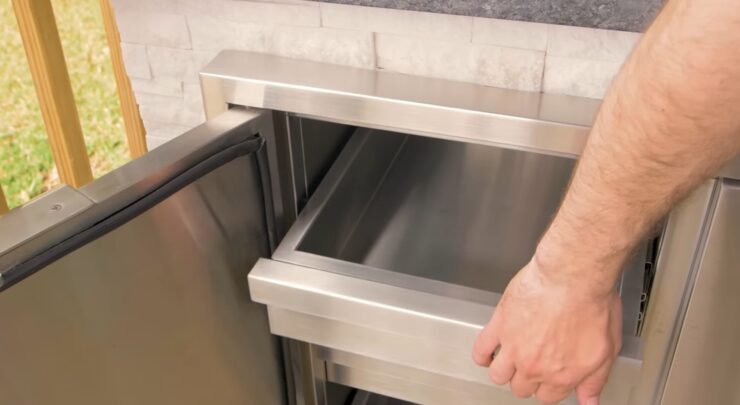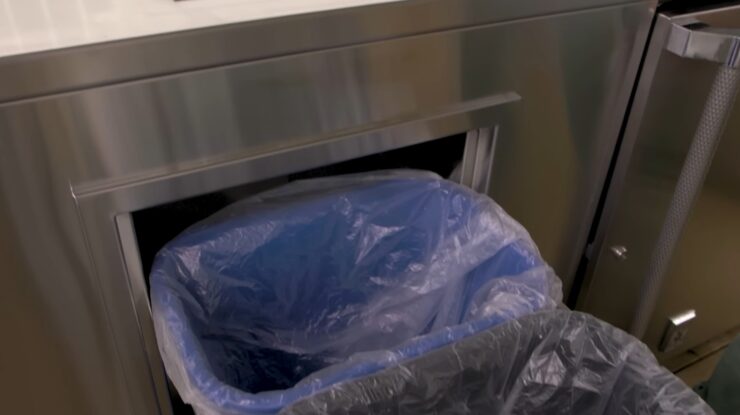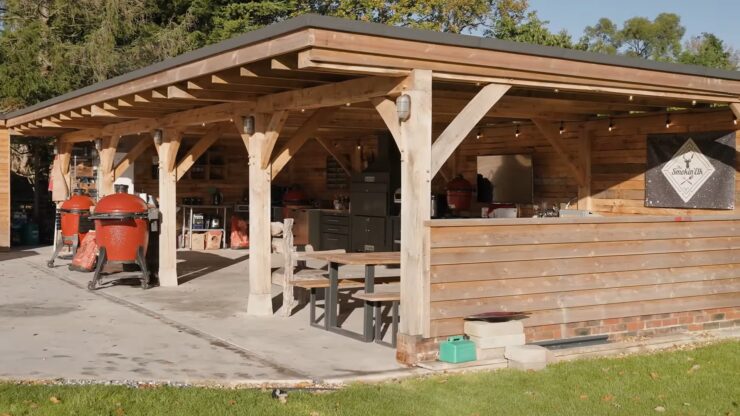Cooks want to optimize every inch of cabinet space to ensure all cooking essentials are neatly organized and easily accessible. However, they often struggle to achieve this goal. When organizing an outdoor kitchen, how can a cook optimize cabinet space to make the task of cooking more efficient?
1. Determine Where Space Is Being Wasted
Identifying and addressing wasted space is one way to create a functional and organized outdoor kitchen. Begin by looking at the items currently in the cabinets. Are they arranged efficiently? Are there any unnecessary or outdated items taking up valuable space? Decluttering and removing unused or redundant items will free up space for more essential ones.
2. Flexible Shelving
Fixed shelves often make it harder to store items of different heights. Adjustable shelf inserts make it easy to customize the spacing to accommodate items of various heights, preventing wasted vertical space. Visit the blog at rtaoutdoorliving.com to see what others have done to make the most of this space in their kitchen using items such as these.
3. Door Storage Solutions

Utilize the inside of the doors to create additional storage opportunities. Install door-mounted spice racks to hold the collection of herbs and spices, freeing up valuable shelf space. Add hooks to hang frequently used utensils and oven mitts, keeping them within arm’s reach while cooking.
A knife rack that hangs on the door is one option. However, some cooks prefer to install a wire organizer that attaches to the cabinet door. This organizer can be used to store frequently-used items in the outdoor kitchen. Other options include a cutting board storage pocket or a tool apron attached to the door to hold various items. Think outside the box when coming up with ways to use this often neglected space.
4. Storage Solutions

Storage solutions come in many shapes, sizes, and styles. Stackable containers are ideal for holding dry goods. In addition to keeping the outdoor kitchen organized, they also ensure these foods remain fresh. Have a drawer set aside specifically for these containers, so they are always within easy reach when they are needed.
A deep drawer with removable bins is perfect for many outdoor kitchens. Use these bins to store produce and eliminate bowls on the counter. Bins may also be used to store cans and jars in drawers. The chef won’t need to move between the kitchen in the home and the outdoor kitchen when they have these items at their fingertips.
Wire baskets may be used to hold pots, pans, and cookware in lower cabinets. Ensure these baskets can be pulled out for easy access. Slide-in trays and drawer dividers may be used to hold wine if the outdoor kitchen doesn’t have a separate cabinet specifically for this purpose.
One thing many people don’t consider when designing an outdoor kitchen is countertop space. They choose a counter they think will fit in the area without ensuring it will provide the space they need for food prep. When designing this kitchen, look into a slide-out prep station with a hole over the trash can to handle waste.
5. Waste Management

Waste management is something that must be considered when working to optimize storage space in the outdoor kitchen. By including a pull-out trash can and recycling bin in the cabinet design, a chef can easily dispose of food waste to ensure it does not clutter the work area. In addition, by keeping waste contained within a cabinet, the chef ensures pests are not attracted to the cooking area.
6. Wall-Mounted Tool Holders
Many outdoor kitchens feature wall-mounted knife holders. A magnetic strip holds the knives to ensure they don’t take up valuable counter space and remain accessible. However, knives are only one item that may be stored in a wall-mounted tool holder.
Consider installing a pegboard to hold frequently used cooking utensils. The cook can easily see what they need and grab it without stopping what they are doing. The tools won’t get lost in a drawer, and this option frees up more space in the cabinets for other tools and appliances frequently used in the outdoor kitchen.
7. Vertical Storage
Many people overlook vertical storage and miss out on a lot of space in their outdoor kitchen. A pegboard is good for more than holding tools. It may also be used for pots, pans, and more. In addition, it adds a decorative touch to the kitchen. In fact, a person may want to make this pegboard a focal point by dressing it up in some way. Another option is to invest in stackable organizers to make the most of the vertical space in the cabinets.
8. Hidden Storage
One thing many people overlook is hidden storage. The pull-out trash can is one example of hiding a kitchen feature that is considered essential. For example, install a paper towel holder in a cabinet, so the towels are easily accessible but not in plain view. Some people even choose to have a charging station in their outdoor kitchen. This station ensures they have their mobile devices handy when they are cooking or spending time with friends outdoors.
If a pegboard isn’t ideal for the kitchen, invest in a pots and pans drawer organizer. This organizer holds pots and pans on hooks and slides out so each pot or pan is easily accessible. There will no longer be any worries about the pots and pans all falling when a person goes to get the one they need.
Optimized cabinet space is essential in an outdoor kitchen, as it lacks the room seen in indoor kitchens. With the right storage options, a person will find their kitchen is a place that is not only functional but efficient. When everything has a designated place, cooking and entertaining take little effort. Using the outdoor kitchen becomes more enjoyable.
Begin organizing the cabinets in the outdoor kitchen today. The process does not need to be completed in a single day. Each step that is taken will improve the functionality and efficiency of the kitchen. With time, it will become the perfect place, thanks to the time spent optimizing the cabinet space.

